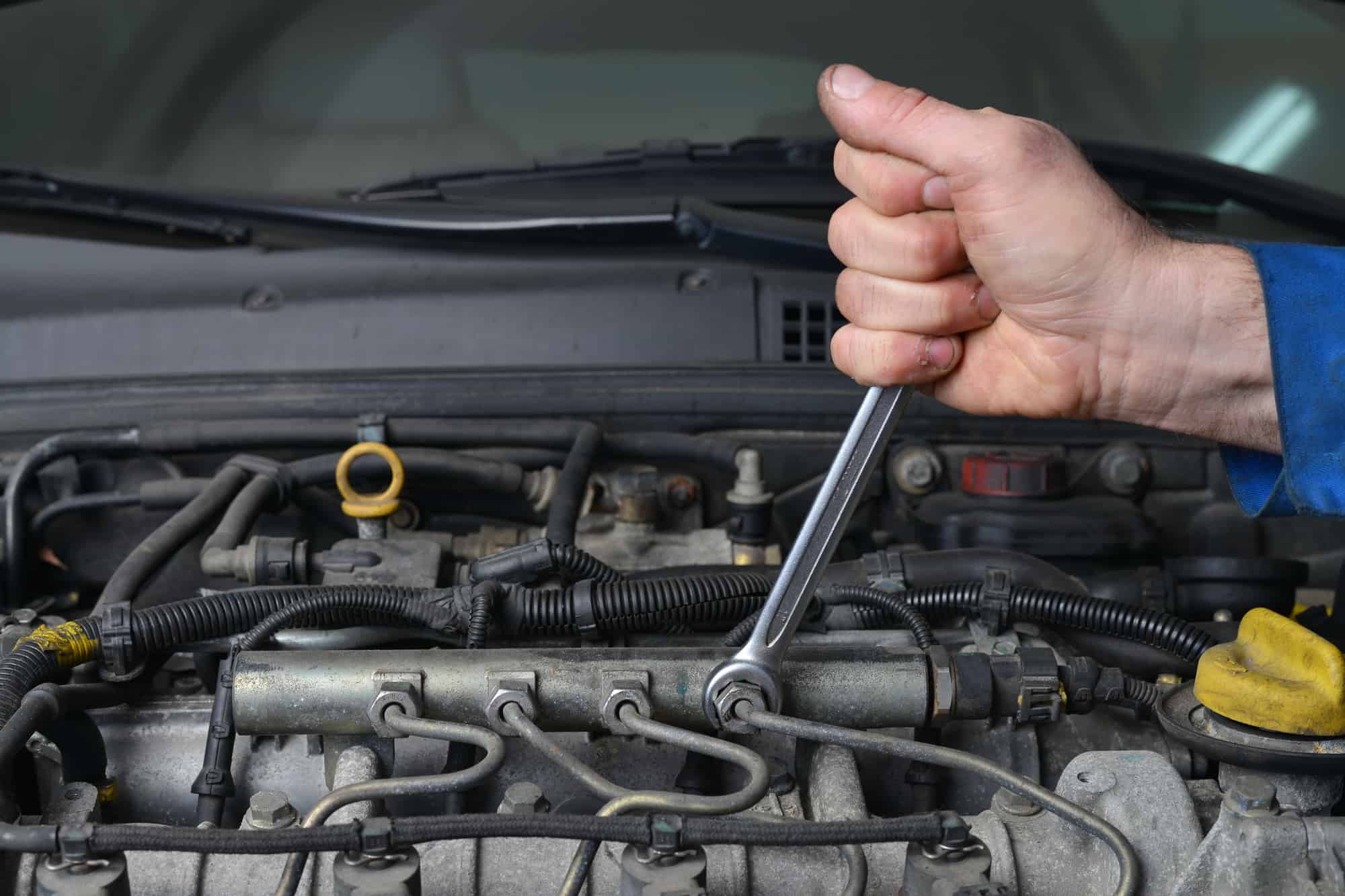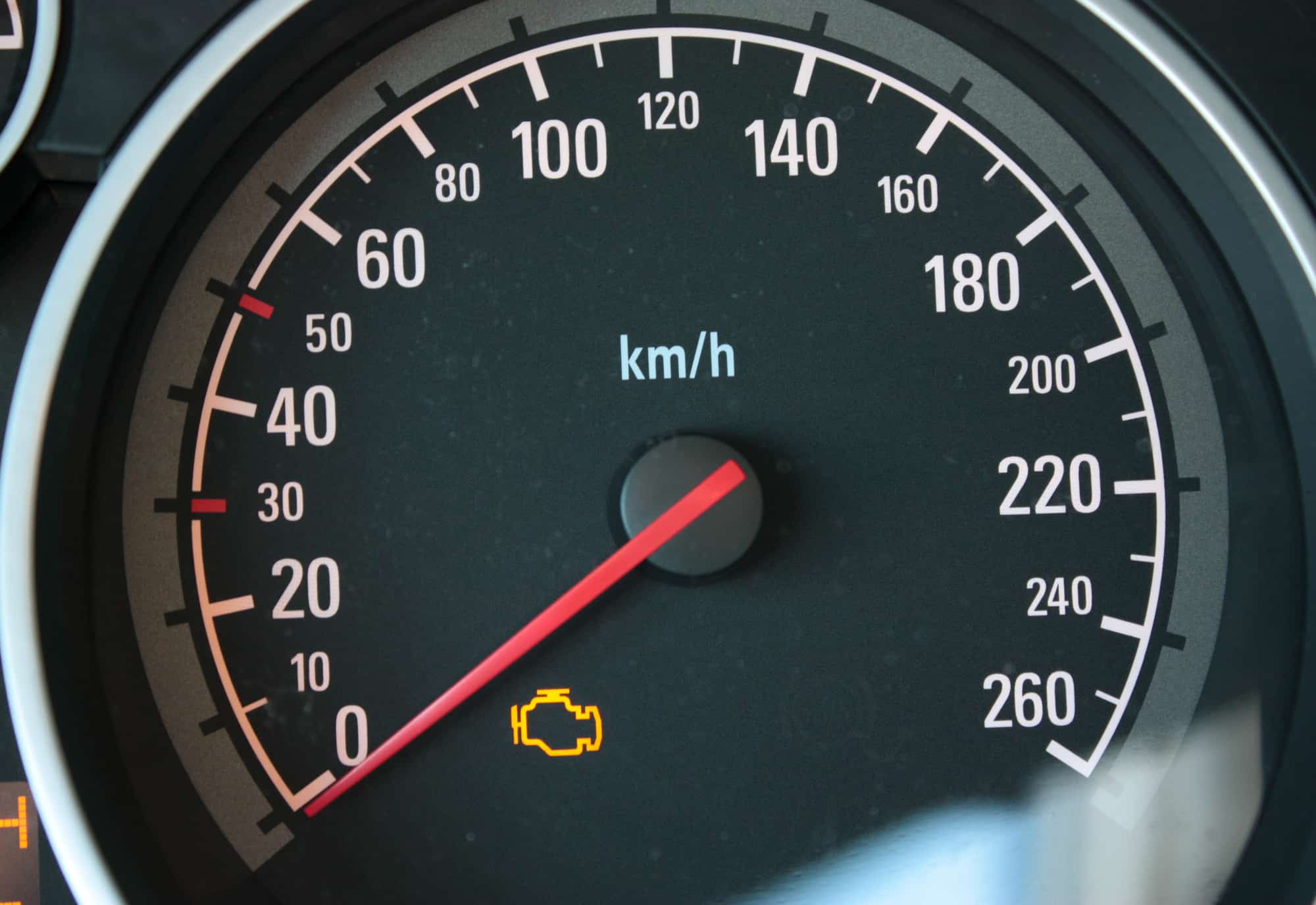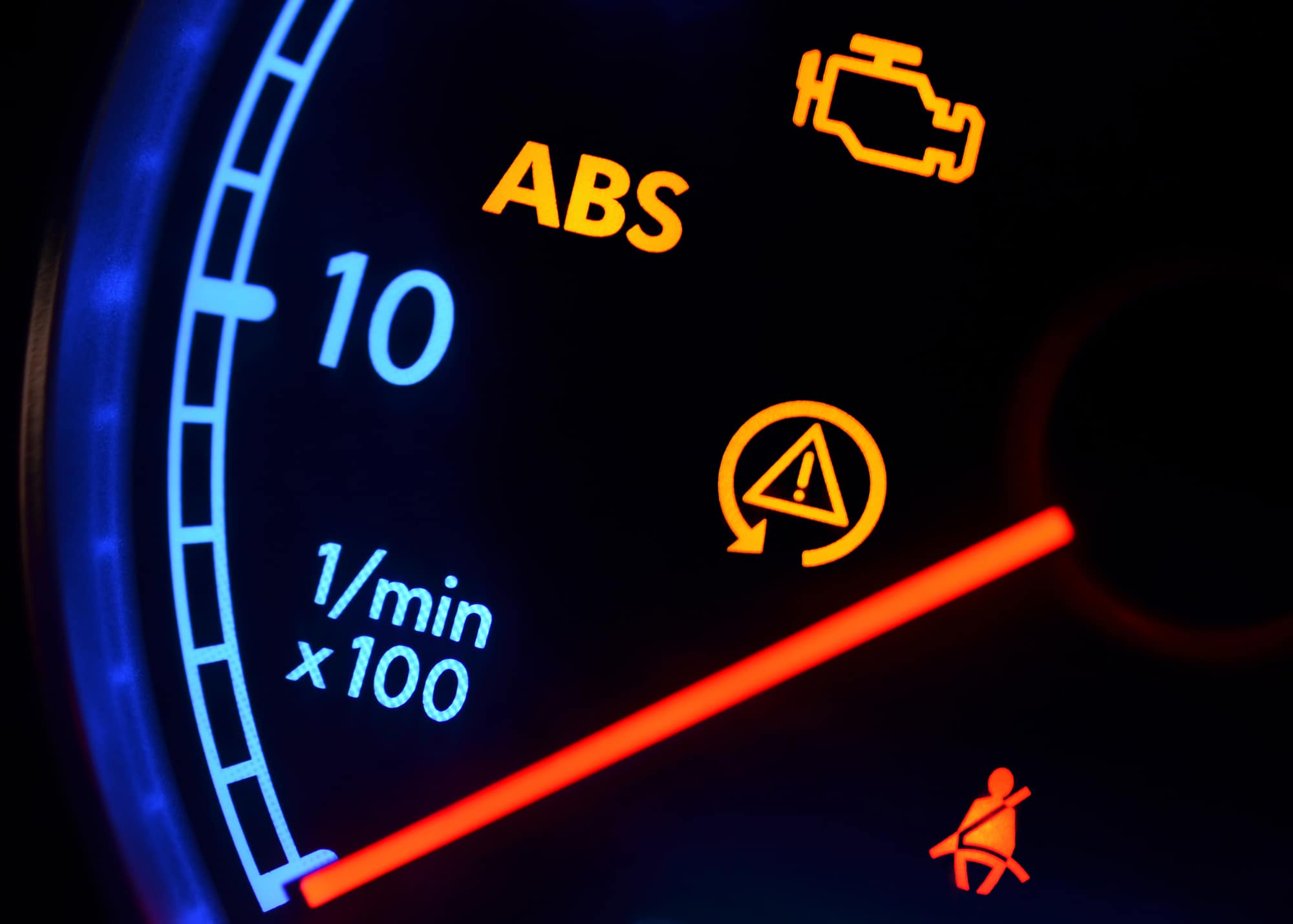The sight of a flashing check engine light on your dashboard is an indication that something is amiss with your vehicle’s engine. However, what does it mean when the check engine light starts flashing and then turns solid?
When the light is flashing, it usually means that the engine is misfiring and potentially causing damage to the catalytic converter. If the light turns solid, it means that the problem is no longer occurring but has been detected by the ECU and the error is stored in ECU memory.
In this article, we will delve into the meanings behind a flashing check engine light and a solid check engine light, explore possible causes, and provide guidance on what steps to take next to address the problem effectively.
What Does It Mean When The Check Engine Light Flashes And Then Turns Solid?
When the check engine light flashes and then turns solid, it usually indicates a serious problem with the engine has occured, such as a misfire and requires immediate attention to diagnose and repair the issue.
Engine misfires can cause damage to various engine components, such as the spark plugs, ignition coils, catalytic converter, and even the engine itself, by causing unburned fuel to enter the exhaust system, overheating the catalytic converter, and potentially damaging the engine’s pistons, cylinders, or valves.
The check engine light is designed to alert the driver that there is a problem with the engine or emission control system. When the check engine light illuminates, it means that the OBD system has detected a fault code, which is a code that indicates a problem with the engine or emission control system. The fault code can be read using a diagnostic tool that is connected to the OBD system.
What Is The Difference Between A Flashing Check Engine Light And A Solid Check Engine Light?
When the check engine light flashes, it usually indicates a serious problem that requires immediate attention.
The flashing light often means that there is a misfire in the engine, which can cause damage to the engine and exhaust system if not addressed promptly.
On the other hand, a solid check engine light means that there is a problem with the engine that needs attention, but it is not necessarily an emergency. You should still get your car checked by a mechanic as soon as possible, but you can usually continue driving the car for a short distance.
A solid check engine light can indicate a variety of problems, such as a faulty oxygen sensor, a loose gas cap, or a blocked catalytic converter.
A check engine light can turn on and off intermittently. This can happen when there is a minor issue that resolves itself, but it can also indicate a more serious problem that needs attention.
If the check engine light turns off, it does not necessarily mean that the problem has been fixed so it’s best to get the car checked by a mechanic to ensure that the problem has been resolved.
Solid Vs. Flashing Check Engine Light (What Do They Each Mean?)
What Does A Solid Check Engine Light Mean?
A solid check engine light typically indicates a malfunction or issue with one or more components of the vehicle’s engine or emission control system.
When the check engine light is solid, it means that the vehicle’s onboard diagnostic system has detected a problem and has stored a Diagnostic Trouble Code (DTC) related to the issue.
A solid check engine light generally means that there is a non-critical issue that needs to be addressed.
The specific cause of a solid check engine light can vary widely, ranging from relatively minor issues to more severe problems.
Some common causes include a faulty oxygen sensor, loose or damaged gas cap, catalytic converter issues, engine misfire, or a malfunctioning emission control system.
When the check engine light is solid, it is important to address the issue as soon as possible. While a solid check engine light doesn’t necessarily indicate an immediate danger or need to pull over, it should not be ignored completely.
It is recommended to retrieve the DTCs using an OBD-II scanner and consult the vehicle’s manual or a qualified mechanic to diagnose and resolve the specific problem causing the solid check engine light.
Ignoring a solid check engine light can lead to potential performance issues, decreased fuel efficiency, and further damage to the vehicle’s engine or emissions system.
What Does A Flashing Check Engine Light Mean?
A flashing check engine light is typically a more urgent and serious warning compared to a solid check engine light.
When the check engine light is flashing, it indicates a severe issue with the engine that usually requires immediate attention.
The most common cause of a flashing check engine light is a severe engine misfire. A misfire occurs when one or more cylinders in the engine fail to ignite properly, resulting in a disruption of the combustion process.
This can be caused by various factors such as faulty ignition components, damaged spark plugs, fuel system issues, or an overheating engine.
Other potential causes of a flashing check engine light can include a malfunctioning catalytic converter, oxygen sensor problems, or issues with the vehicle’s emissions control system.
When the check engine light is flashing, it is important to take immediate action. Sometimes, continuing to drive the vehicle with a flashing check engine light can cause further damage to the engine, catalytic converter, or other components.
It is usually recommended to reduce speed, avoid heavy acceleration or high engine loads, and safely pull over as soon as it is safe to do so.
After stopping, it is advisable to have the vehicle inspected by a qualified mechanic or towing service to diagnose and address the underlying issue causing the flashing check engine light.
Common Causes of Flashing Check Engine Light Followed by a Solid Light
A flashing check engine light followed by a solid light is a specific sequence that can indicate certain problems with your car.
Here are some common causes for this pattern:
1. Severe Engine Misfire
A misfire occurs when one or more cylinders in the engine fail to ignite properly. A severe misfire can cause the check engine light to flash initially, indicating an ongoing and significant problem.
If the misfire condition continues, the check engine light will eventually turn solid.
2. Faulty Ignition Components
Worn-out ignition coils, spark plugs, or spark plug wires can lead to a misfire and trigger a flashing check engine light.
If not addressed, this can result in engine performance issues and potential damage to the catalytic converter.
3. Fuel System Issues
Problems with the fuel injectors or fuel pump can disrupt the proper fuel delivery to the engine, leading to a misfire.
A flashing check engine light followed by a solid light can indicate issues such as partially clogged injectors or persistent low fuel pressure.
4. Overheating Engine
An overheating engine can cause severe damage to various engine components, including the cylinders. The increased heat can result in engine misfires and trigger a flashing check engine light.
Once the engine cools down, the check engine light may turn solid as an indicator that you should investigate the problem further.
5. Damaged or Faulty Sensors
Malfunctioning oxygen sensors or other engine sensors can lead to an incorrect air-fuel mixture, causing a misfire and subsequent check engine light activation.
A flashing light followed by a solid light can indicate an ongoing intermittent issue related to the sensor malfunction.
What Next – How To Diagnose A The Cause Of A Flashing And Solid Check Engine Light
The first step in diagnosing a flashing and solid check engine light is to use an OBD-II scanner to retrieve diagnostic trouble codes (DTCs). The OBD-II port is usually located under the dashboard on the driver’s side. Once connected, the scanner will display the DTCs that caused the check engine light to turn on.
Here are some common DTCs that can be stored in the ECU when there is a check engine light on the dashboard:
| Check engine light | OBD codes |
|---|---|
| Solid | P0171, P0174, P0300, P0301, P0302, P0303, P0304, P0305, P0306, P0420, P0430, P0440, P0442, P0446, P0455, P0460, P0505, P1130, P1140, P1150, P1258, P1280, P1281, P1282, P1299, P1300, P1440, P1441, P1442, P1443, P1444, P1445, P1456, P1491 |
| Flashing | P0300, P0301, P0302, P0303, P0304, P0305, P0306, P0307, P0308, P0315, P0325, P0330, P0340, P0350, P0351, P0352, P0353, P0354, P0355, P0356, P0357, P0358, P0400, P0401, P0402, P0403, P0404, P0405, P0420, P0430, P0440, P0442, P0455, P0500 |
(Note that this table is not exhaustive and there can be other OBD codes related to a solid or flashing check engine light. Some OBD codes may overlap between a solid and flashing check engine light.)
Once you have carried out a diagnostic readout of the ECU, then follow these general steps to help to guide you to the cause of the problem. Remember every vehicle is different so consult a service manual for your vehicle or hire a mechanic to diagnose the problem for you.
- Interpret the DTCs: Consult the vehicle’s manual or use online resources to interpret the retrieved DTCs. Each code corresponds to a specific problem area, giving you a starting point for diagnosis.
- Inspect Relevant Components: Based on the DTCs, perform a visual inspection of the components or systems related to the codes. This may include checking ignition components, fuel system components, sensors, and emissions-related components.
- Address Immediate Concerns: If any obvious issues are discovered during the inspection, such as disconnected or damaged wires, loose connections, or leaking fluids, address them promptly. Repair or replace any damaged or faulty components.
- Perform Functional Tests: Depending on the specific DTCs and symptoms, perform functional tests to verify the operation of relevant components. This may involve testing sensors, checking fuel pressure, or conducting a compression test on the engine cylinders.
- Consult Technical Resources: If the cause of the check engine light is not apparent from the visual inspection and functional tests, consult technical resources such as repair manuals or online forums to gather additional information about potential causes and diagnostic procedures.
- Seek Professional Help if Needed: If you are unable to diagnose the cause of the check engine light on your own, or if the repairs required are beyond your skill level or tools, it is advisable to seek the assistance of a qualified mechanic. They have the expertise and specialized equipment to accurately diagnose and repair the issue.
Remember, diagnosing the cause of a check engine light requires patience and thoroughness. It’s essential to follow proper diagnostic procedures and not rely solely on the DTCs.
Understanding the symptoms, performing inspections, and utilizing technical resources will help identify the underlying problem and guide the appropriate repairs.
FAQs
1. Is it worse if your check engine light is flashing or solid?
A flashing check engine light is generally considered more severe than a solid check engine light. Here’s why:
– Flashing Check Engine Light: When the check engine light is flashing, it indicates a significant issue that requires immediate attention. It often signifies a severe engine misfire or another critical problem that can potentially cause damage to the engine or emissions system if not addressed promptly. Driving with a flashing check engine light is not recommended, as it can lead to further damage and potentially leave you stranded on the road.
– Solid Check Engine Light: A solid check engine light indicates a problem within the engine or emissions system, but it is generally not as urgent as a flashing light. While a solid light should not be ignored, it signifies a less severe issue that may still require attention. It is important to have the cause of the solid check engine light diagnosed and repaired in a timely manner to prevent any potential deterioration of performance or further damage to the vehicle.
2. How long can you drive with a blinking engine light?
If your check engine light is blinking, it is recommended that you immediately reduce your speed, avoid high engine loads or heavy acceleration, and have your vehicle inspected by a qualified mechanic as soon as possible as driving with a blinking check engine light can cause further damage to your engine and emissions system. It is generally not recommended to drive for an extended period of time with a blinking check engine light.
3. Does a flashing check engine light mean transmission trouble?
A flashing check engine light does not necessarily indicate transmission trouble on its own. However, it is possible for transmission issues to trigger a flashing check engine light if they are severe enough or if they affect the engine’s performance. Here are a few scenarios where a flashing check engine light may be related to transmission problems:
– Severe Engine Misfire: A misfire in the engine can sometimes be caused by transmission-related issues, such as a faulty torque converter or a transmission control module malfunction. If the misfire is severe enough, the check engine light may flash.
– Transmission Overheating: If the transmission is overheating due to a malfunctioning cooling system, low fluid levels, or a faulty transmission fluid pump, it can lead to engine performance issues. These issues can trigger a flashing check engine light.
– Transmission Sensor Issues: Faulty transmission sensors, such as the speed sensor or shift solenoids, can cause irregularities in transmission operation. In turn, this can affect engine performance and potentially lead to a flashing check engine light.
As an Amazon Associate we earn from qualifying purchases.










